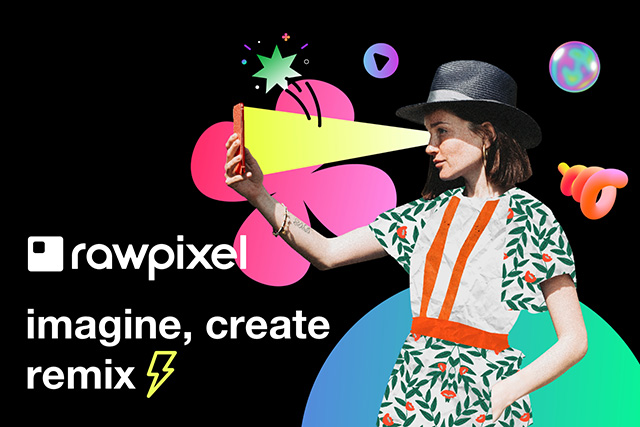Retro Futurism Trend in Graphic Design: Blending Nostalgia with the Future
Share
Graphic design is a dynamic field, constantly evolving as designers experiment with new styles while drawing inspiration from the past. One trend making waves in 2025 is Retro Futurism—a captivating blend of vintage aesthetics and futuristic elements. Think bold geometric shapes, neon colors, grainy textures, and a fusion of 80s and early 2000s nostalgia with modern tech influences.
But what makes this trend so appealing, and how can you incorporate it into your designs? Let’s dive in.
What Is Retro Futurism in Graphic Design?
Retro Futurism is a design movement that imagines the future through the lens of the past. It often takes inspiration from vintage sci-fi, arcade games, cyberpunk aesthetics, and retro-futuristic pop culture. This trend combines old-school design motifs—like pixelated graphics, chrome lettering, and glitch effects—with sleek, high-tech elements to create a visually striking contrast.
Key Influences of Retro Futurism
- 1980s Cyberpunk & Vaporwave: Think neon-lit cityscapes, wireframe grids, and synthwave color palettes.
- Early 2000s Y2K Aesthetics: Metallic finishes, holographic effects, and 3D typography inspired by early digital interfaces.
- Mid-Century Sci-Fi & Space Age Designs: Vintage space exploration posters, flying cars, and optimistic depictions of the future.
- Arcade & Gaming Nostalgia: Pixel art, glitch effects, and UI elements reminiscent of early computer graphics.
Why Is Retro Futurism Gaining Popularity?
1. Nostalgia Meets Innovation
People love revisiting iconic aesthetics from the past, and when combined with cutting-edge technology, it creates a fresh, futuristic appeal. Brands and designers are tapping into this mix of familiarity and innovation to connect with audiences emotionally.
2. The Resurgence of Y2K & 80s Trends
From fashion to music and now graphic design, 80s neon and early 2000s aesthetics are making a comeback. The design world is embracing chrome text, low-poly graphics, and vaporwave gradients to evoke nostalgia.
3. The Rise of AI & Digital Aesthetics
With AI-generated art and digital interfaces becoming more mainstream, futuristic visuals are more relevant than ever. Retro Futurism captures this shift by blending human creativity with tech-driven designs.
How to Use Retro Futurism in Graphic Design
1. Bold Color Palettes
Retro Futurism thrives on high-contrast, neon-inspired color schemes. Electric blues, purples, magentas, and greens are popular choices, often set against deep blacks or dark gradients for a cyberpunk feel.
💡 Try a gradient blend of neon pink and electric blue for a striking background.
2. Geometric Shapes & Grids
Incorporate symmetrical, geometric compositions, wireframe grids, and abstract 3D shapes to create a futuristic yet structured aesthetic.
💡 Think of 80s arcade game UI elements or Tron-like digital landscapes.
3. Retro Typography with a Futuristic Twist
- Chrome & Metallic Fonts: Inspired by Y2K album covers and early internet aesthetics.
- Pixel Art & Digital Glitch Fonts: Perfect for gaming-inspired designs.
- Futuristic Sans-Serifs: Sleek and minimalist fonts work well with high-tech aesthetics.
💡 Use a chrome effect on bold sans-serif fonts for a retro-futuristic look.
4. Holographic & Metallic Effects
Retro Futurism often uses iridescent and reflective surfaces to mimic the futuristic materials imagined in the past. These can be applied to text, icons, and backgrounds.
💡 Adobe Photoshop and Illustrator offer metallic texture overlays to create this effect.
5. Retro Sci-Fi & Cyberpunk Imagery
Incorporate robotic elements, neon cityscapes, vintage tech gadgets, and space exploration visuals. Combining analog textures (like VHS distortion) with sleek digital elements creates a compelling juxtaposition.
💡 Experiment with AI-generated visuals to create otherworldly compositions.
Examples of Retro Futurism in Action
1. Branding & Logo Design
Many brands are embracing bold typography, neon colors, and metallic gradients in their logos and branding. Tech startups, fashion brands, and entertainment companies use these elements to stand out.
2. Web & UI Design
The gaming and entertainment industries have embraced Retro Futurism in website design, with glowing buttons, pixelated elements, and cyberpunk-inspired interfaces.
3. Album Covers & Posters
Musicians and movie studios use Retro Futurism for album covers and promotional materials, drawing inspiration from 80s synthwave, retro arcade culture, and futuristic dystopian themes.
4. Automotive & Tech Ads
Car companies and tech brands use sleek, chrome finishes, holographic lighting, and neon reflections to create a futuristic yet nostalgic appeal.
Final Thoughts: Is Retro Futurism Here to Stay?
As technology continues to evolve, Retro Futurism bridges the gap between past visions of the future and today’s digital reality. Whether you’re designing for branding, web, or entertainment, incorporating bold colors, geometric patterns, and nostalgic-futuristic elements can make your work feel both timeless and cutting-edge.
So, are you ready to dive into the Retro Futurism trend? Try experimenting with neon hues, chrome typography, and sci-fi elements to create a look that’s both nostalgic and visionary.
What do you think about the Retro Futurism trend? Let’s discuss in the comments! 🚀
Tags








